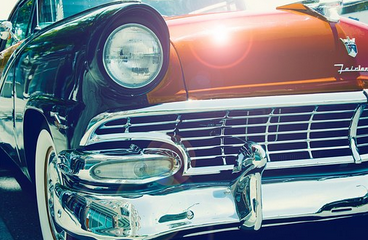How Do You Insure a Classic or Collector Car?
Last Updated on March 15, 2022
You’ve finally saved up enough money to buy that 1969 Dodge Charger, the one that you’ve been dreaming about since you were a little kid. The only thing that stands in the way between you and miles of blissful driving through the countryside in your new prize vehicle is auto insurance.
How should you insure a classic car?
 The most important difference between insuring a regular vehicle and a classic car is in the vehicle’s appreciation. Regular automobiles depreciate in value with each passing mile. Classic cars, for the most part, appreciate over time.
The most important difference between insuring a regular vehicle and a classic car is in the vehicle’s appreciation. Regular automobiles depreciate in value with each passing mile. Classic cars, for the most part, appreciate over time.
A regular auto insurance policy won’t just automatically account for this difference. A regular auto insurance policy’s default method of paying out claims is by Actual Cash Value.
Actual Cash Value (ACV) will pay out the market value of the item, in this case, a car, minus depreciation.
This is obviously not good enough when we’re talking about insuring a classic car. The type of value that’s needed with classic cars is something called Agreed Value. This is when the company will guarantee to insure the vehicle for a specific amount.
It’s important to note that all classic cars need to be insured under an auto policy. Even if your classic car is going to sit in the garage 99% of the time, your homeowners policy will not cover it if anything happens to it. Cars need to be insured under auto policies, no matter what type of automobiles we’re talking about.
Which Type of Classic Car?
There are different types of classic cars when it comes to insurance purposes. The most popular types are antique cars, classic cars (restricted vs. regular use), modified collector cars, and replicas.
The difference between all of these is mainly in age and use. Talk to your insurance agent about how you intend to use the car, and they will classify your vehicle in the appropriate category.
Another consideration is the type of coverage you need. Many classic car programs will require that you carry at least comprehensive coverage on your vehicle, even if you don’t intend to drive it.
If you are certain that it will never be on the road, ask about insuring it for Comp-only. This means that you won’t have any liability coverage, so would not be able to legally take it out on the road. You would still carry comprehensive coverage in case of fire or theft damage.
Option 1: Rate It Like A Regular Car
Technically, there is nothing stopping you from putting your classic car on your existing auto policy. You certainly can do that. Just know that you won’t be getting the full value of the car if there’s a loss. This might not be the most affordable route either.
Option 2: Your Insurance Company Has a Built-In Classic Car Program
Some insurance companies have a built-in classic car program in their normal auto policy rating. For example, if you recently bought a 2015 Honda Civic and notify your agent of the purchase, she/he will then add your vehicle to your policy as a “Private Passenger” vehicle. That is the type of vehicle classification for most regular vehicles.
If you called that same agent and you are with a company that has a built-in classic car program, then the agent would simply select the “Classic Car” box instead of “Private Passenger”. They would then ask you for the value, they might need a receipt or appraisal, and might even get pictures of the car.
In this case, you still have the same insurance company and you likely wouldn’t know any difference except the additional premium.
The downside to doing this is that your current auto insurance company might not have competitive rates for classic cars. Adding a ’63 Corvette to your existing policy, even if it’s insured properly, might cost upwards of $1,000 or more just for that one vehicle.
Option 3: Purchase Insurance Through a Specialty Company
There are some insurance companies that specialize in writing classic car insurance. They typically offer very competitive rates since that’s all they do. They also usually offer excellent claims services and understand the specific coverages that you need on a classic car.
The downside to going through a specialty company is that it’s just one more bill to worry about. Rather than adding it to your existing policy, which you can probably access online and have automatic payments withdrawn, your specialty company will be a separate bill, separate policy, and separate company.
If you know your auto insurance company offers classic car coverage with agreed values, then sometimes it’s more convenient to simply add it to your current policy, although it might be a little more expensive than going through a specialty company.

